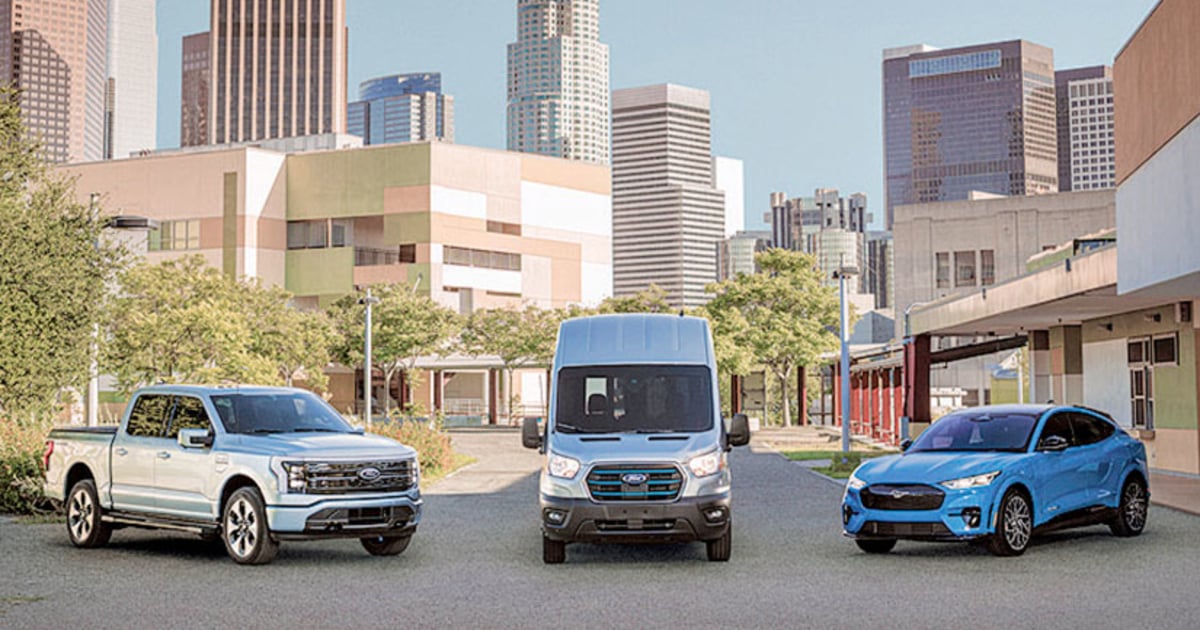
DETROIT — Ford Motor Co. last week confirmed what many had long assumed: Its electric vehicles are big money-losers — for now.
But in re-segmenting its earnings reports to disclose profits and losses for its electric, internal combustion and commercial vehicle businesses, the automaker is giving Wall Street a more detailed road map of what makes it successful today and how it plans to become an EV leader in the future.
Ford said its EV business unit, called Model e, is expected to lose $3 billion this year. That contrasts with forecasts of $7 billion in earnings before interest and taxes for the combustion unit and $6 billion for its commercial business.
The projection would bring the total amount lost on EVs to $6 billion from 2021 through 2023.
Still, the company stood by its goal of earning an 8 percent profit margin on EVs — and 10 percent overall — by the end of 2026.
“It shouldn’t come as a shock; we know it’s going to be difficult to make money on EVs for a while,” Stephanie Brinley, principal automotive analyst at S&P Global Mobility, told Automotive News. “Tesla took a long time to make money. We know the transition to electric vehicles is going to be expensive, and it’s going to take some time to catch up to profitability and get margins where you want them to be. By changing the way Ford reports finances, it gives you the visibility in how they’ll manage the transition.”
Ford executives say they expect the company’s EV losses to grow about 43 percent this year because it’s investing to increase production of current models and develop next-generation products on a dedicated EV platform. The 2022 loss of $2.1 billion on EVs equates to a margin of about negative 41 percent, Ford said, based on external revenue of $5.25 billion.
“Ford Model e is an EV startup within Ford,” CFO John Lawler said. “As everyone knows, EV startups lose money while they invest in capabilities, develop knowledge, build volume and gain share.”
Still, Lawler said Ford would be “approaching contribution margin breakeven” on EVs by the end of the year and that by 2024, its first-generation EVs will be profitable. The automaker expects to reach production capacity of 600,000 EVs annually by the end of 2023 and be able to build 2 million a year by 2026.
To get to an 8 percent margin on EVs by the end of 2026, Ford will rely on a number of business operation improvements.
In a presentation to investors, Lawler said scaling volume will account for 20 percentage points of the growth in margin, design and engineering will account for 15 points, vertically integrating battery production will add 10 points, and additional business improvements will add 3 points.
Ford plans to continue investing heavily in the Model e business with ongoing construction at plants in Tennessee, Kentucky and Michigan. Last week, it said the BlueOval City plant in Stanton, Tenn., would have capacity to build 500,000 next-generation electric pickups per year when it opens in 2025.
Lawler said he was confident the company could reach its targets in part because of recent hires such as Doug Field and Alan Clarke, who both previously worked at Tesla and now have executive roles at Ford.
“It’s about the talent we have,” Lawler said. “We all know there is one profitable EV manufacturer. The folks that designed those vehicles are at Ford.”
Meanwhile, gasoline vehicles continue to drive Ford’s profits, and the company doesn’t see that changing anytime soon.
The combustion business, Ford Blue, made $6.8 billion in 2022 while posting a 7.2 percent profit margin on external revenue of $94.7 billion. The commercial unit, Ford Pro, made $3.2 billion last year with a margin of 6.6 percent on external revenue of $48.9 billion.
Overall, Ford posted 2022 adjusted EBIT of $10.4 billion and a $2 billion net loss.
“Ford Blue and Ford Pro are both solidly profitable today and well positioned for growth,” Lawler said.
Lawler said Ford Pro is expected to nearly double its earnings this year as redesigned Super Duty pickups arrive and it introduces a 1-ton Transit van in Europe. The Ford Blue side this year will roll out the next-generation Mustang and freshened Escape crossover, in addition to the Super Duty overhaul.
“Ford Blue, when you look at that, we still believe that’s a growth business,” Lawler said.
“We’ve pared out the unprofitable vehicles and now have our core, iconic vehicles. We see growth there in derivative strategies — Raptors, Tremors, etc. — and there’s more to come in that space.”